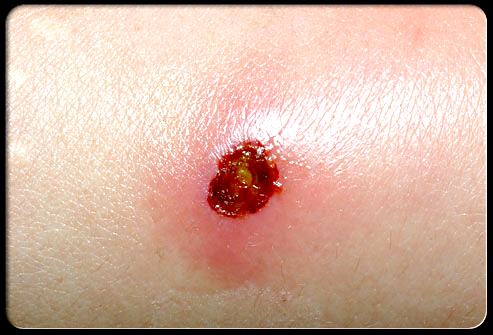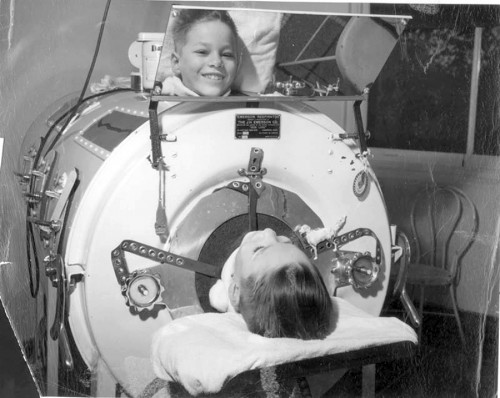Child Diseases Parents Should Know – Part 8
Child Diseases which are “commonly common” is our continued quest in this Part 8 of the series listing diseases all parents should know about.
I do need to confess that as I go through the pages of my “Second Brain,” which I’ve been telling you about using during my residency training, I’m beginning to get a hint that this endeavor might go on forever.
It seems every page brings back another memory of at least one patient that I spent no small amount of time and effort hovering over and worrying about.
The diseases we’ve talked about so far have been: Part 1, Croup and Bronchiolitis; Part 2, ear infections and “glue” ear; Part 3, Hand, Foot and Mouth Disease, Conjunctivitis and Fifth Disease; Part 4 Rotavirus and Kawasaki Disease; Part 5, Chickenpox, Measles, Mumps and Rubella; Part 6, Diphtheria, Pertussis and Tetanus; and, Part 7, Meningitis, Sore Throat and Scarlet Fever.
A Few More Child Diseases For Parents To Know About
Polio, Reye’s Syndrome and MRSA
Today we’ll discuss a combination of old and new diseases. One which plagued the Pharaohs and two completely unique to our century.
Polio
Polio is included here not because I think you’ll ever have a child with it; but, because knowing about it SHOULD affect the way you deal with children’s health and illnesses. It’s a killer disease which affects and paralyzes the nervous system including those nerves for breathing.
Unfortunate children who contracted it needed to live in an “iron lung” in order to stay alive until the disease had run its course. For those who did live long enough to regain their breathing muscles, it usually meant learning to walk all over again and usually with leg braces.
I’ve written a more full description in a previous article about immunizations because this was one of the first and most welcome advances in medicine there has been. We still have the immunization today and now days it can even be given on a sugar cube!
Reye’s syndrome
 Reye’s Syndrome – Asprin the culpritSo far the diseases we’ve talked about have all been ancient and probably gave fevers and rashes to Cain, Abel and their siblings. Reye’s syndrome is the first one I remember to have been “invented” and described during MY career.
Reye’s Syndrome – Asprin the culpritSo far the diseases we’ve talked about have all been ancient and probably gave fevers and rashes to Cain, Abel and their siblings. Reye’s syndrome is the first one I remember to have been “invented” and described during MY career.
As it turns out however Reye’s is not a disease at all but a syndrome of side-effects apparently caused by a treatment we were using for other diseases. When children who are infected with certain viruses like the flu and chicken pox are given aspirin, their liver gets sick and their brain can swell.
Just as they are just recovering from their original disease, children who were given aspirin begin having dramatic behavior alterations, vomiting, seizures and even coma. About 30% of those with the syndrome die.
And even though we seemed to have “cured” it by warning parents NOT TO GIVE ASPRIN TO CHILDREN, we still don’t have any idea why it happens.
WARNING: Children under 16 should NOT be given aspirin, except on a doctor’s advice!
Some very observant physicians noticed that many of the hundreds of cases (555 in 1980) had been given aspirin and they began warning against it in the ’80s. These days there isn’t more than 2 or 3 cases in the whole of the U.S. every 5 – 10 years.
MRSA
 Skin ulcer and cellulitis caused by Staph Aureus bacteriaStaph Aureus is a bacteria which might have been the cause of Job’s boils as reported in the bible. That’s what it does mostly – infect skin to cause boils, cellulitis, ulcers, furuncles and the like.
Skin ulcer and cellulitis caused by Staph Aureus bacteriaStaph Aureus is a bacteria which might have been the cause of Job’s boils as reported in the bible. That’s what it does mostly – infect skin to cause boils, cellulitis, ulcers, furuncles and the like.
The “regular” Staph Aureus was found to be killed by penicillin when it was first discovered; but, even at that time, it was obvious that this bacteria had a trick up its sleeve – it can change itself enough to be “immune” to an antibiotic!
Shortly after penicillin became available it was noted that once in awhile an infection wouldn’t heal when it was given. Experimentation led to the finding that slightly altering penicillin (adding a methyl group to make it methyl-penicillin) restored its killing power against Staph.
That was the situation of medicine when I went to school – we knew that in order to kill staph we had to use methylpenicillin. Unfortunately, a few years ago the darn thing mutated again and now there is a strain which is “immune” to that as well: Methicillin Resistant Staph Aureus (MRSA). So, now we have NOTHING to kill it.
This particularly frightening situation has led recently to a complete rethinking of how we prescribe antibiotics for about every disease and how we can prevent bacteria from developing resistance to drugs.
Fortunately for most of the populace, and only for now, MRSA infections usually develop in people being treated in the hospital – especially intensive care units and surgical wards. The tiny and temporary reprieve should give us all an entirely new motivation to keep things and people clean and not let skin infections get started in the first place.
Knowing about this single bacteria has begun making most caring physicians agonize over every decision to prescribe any antibiotics. “Are they really needed this time?” and “is this bug going to develop resistance to this too?”
– – 0 – –
We’ve now nearly covered most of the “core” diseases that parents should know about. Part 9 will bring us even closer, see you then.
11 Posts in Childhood Diseases (childdiseases) Series
- Part 10 - Lyme - Allergies – 9 Oct 2014
- Part 9 - Impetigo - Influenza – 1 Oct 2014
- Part 8 - Polio - MRSA – 23 Sep 2014
- Part 7 - Meningitis - Scarlet Fever – 11 Sep 2014
- Part 6 - Diptheria - Tetanus – 3 Sep 2014
- Part 5 - Varicella - Rubella – 18 Aug 2014
- Part 4 - Rotavirus - Kawasaki's – 10 Aug 2014
- Part 3 - Hand, Foot, Mouth and Fifth disease – 29 Jul 2014
- Part 2 - Otitis, Glue ear – 21 Jul 2014
- Part 1 - Croup, Bronchiolitis – 17 Jul 2014
- Childhood Diseases Parents Should Know: Intro/Index – 15 Jul 2014
Advertisement by Google
(sorry, only few pages have ads)

